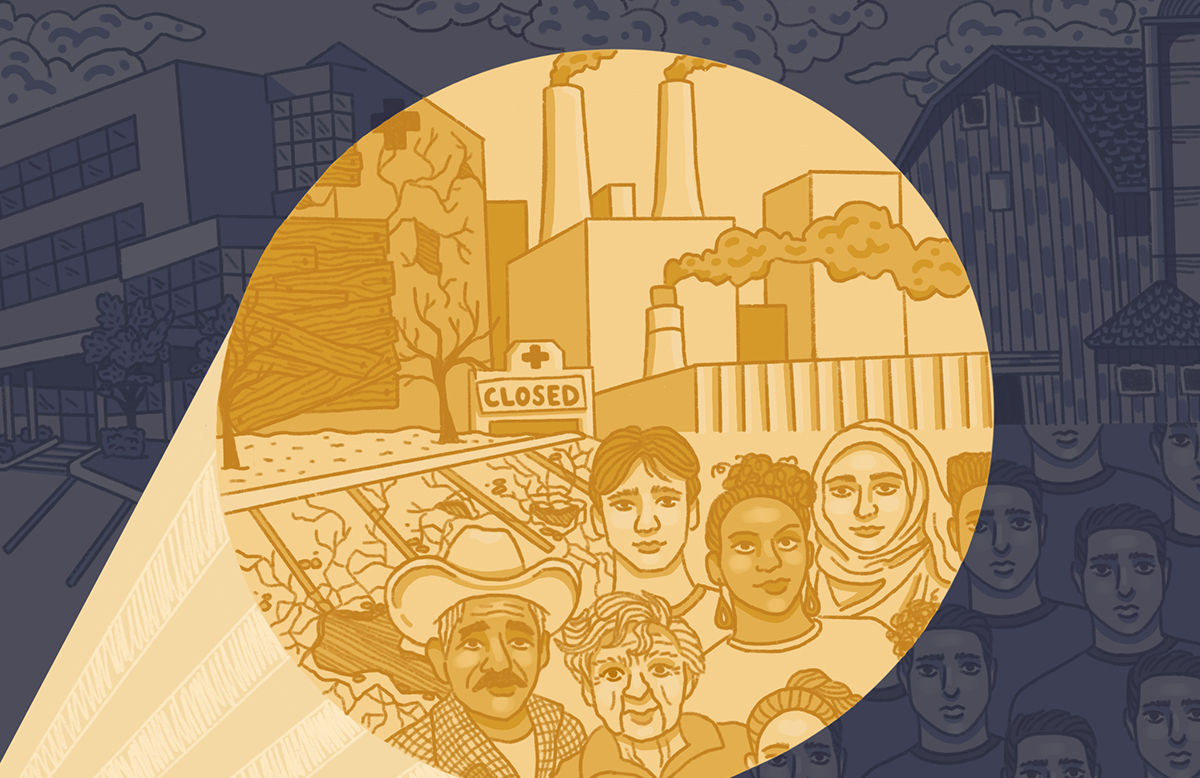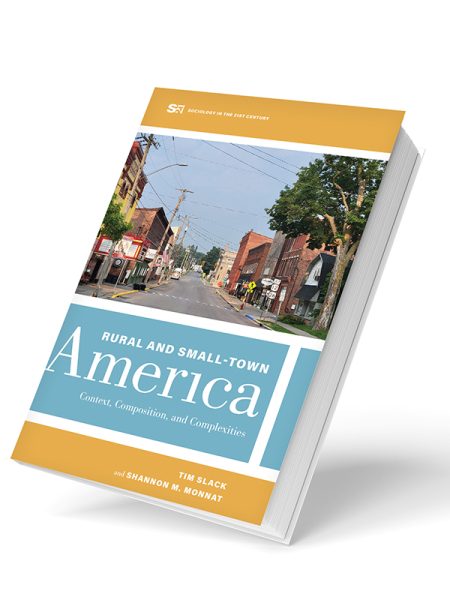Front List
Myths and Misunderstandings About Rural America
Five insights into rural people and places that challenge conventional wisdom

Rural America is substantial in its size, population share, and social and economic significance. Roughly one in five Americans live in rural areas, and the vast majority of the nation’s land area is rural. Yet, in a nation with a mostly urban population, the challenges faced by rural people and places are often overlooked or misunderstood. Here are five myths and misunderstandings about rural America — a handful among many — related to population loss, employment, racial composition, health, and politics.
Myth 1: In the context of urbanization, rural America is fading away due to population loss.
Over the course of U.S. history — as we transitioned from an agrarian to an industrial and now an information-based economy — populations have increasingly concentrated in urban areas. But urbanization has not been linear or unidirectional. In the 1970s and 1990s, rural areas experienced greater population growth than urban areas, periods coined “rural rebounds.” And rural places with attractive natural amenities (e.g., lakes and mountains) consistently buck the depopulation trend. Paradoxically, the very definition of “rural” puts limits on growth. Many rural areas are vibrant and growing, but sustained population growth results in places being reclassified as urban. Much of what appears to be rural depopulation and urban growth in aggregate statistics stems from formerly rural people and places being moved to the urban side of the ledger over time.
Myth 2: Rural is synonymous with farming.
Agriculture does constitute a greater share of employment in rural areas compared to urban areas, but this is also the case with other major sectors, including mining, construction, retail, manufacturing, and government. Nationally, just over 5% of employment in rural counties is in agriculture, and most farm families also engage in off-farm employment. Manufacturing is an especially important sector of employment in rural areas, where it provides a greater share of jobs and earnings than in cities, making deindustrialization especially painful in rural America. It is one thing for a plant to close in a large and diversified metropolis but quite another when it is the lone “good jobs” employer in town.
In their recent book, Rural and Small-Town America: Context, Composition, and Complexities (University of California Press, 2024), Slack and Syracuse University sociology professor Shannon Monnat paint a social-scientific portrait of the problems and prospects facing the rural United States. The book won the 2025 Frederick H. Buttel Outstanding Scholarly Achievement Award from the Rural Sociological Society. The award is named in honor of Fred Buttel BS’70, MS’72, PhD’75, who was William H. Sewell Professor of Rural Sociology at UW.
Myth 3: Rural America is not racially diverse.
In truth, rural areas are much more diverse than commonly assumed. In 2020, about one in four people (24%) living in rural America were non-White, with Hispanic (9%) and Black (8%) people representing the two largest groups. Further, although Indigenous people represent a relatively small share of the rural U.S. population overall, no other group has more rural residents among its members. Notably, not only is the rural population more racially diverse than many believe, but it is becoming increasingly so — and children are the vanguard. In 2020, nearly one in three rural residents under age 18 was non-White.
Myth 4: Rural America is healthier.
Age-adjusted mortality rates are actually higher in rural areas, and the rural-urban gap is wide, persistent, and growing. The COVID-19 pandemic exacerbated this disparity with disproportionately higher rates of death from the disease in rural communities. Perhaps most concerning is growing rural-urban inequality in mortality among working-age adults (25–64). This trend is being driven by nearly all major causes of death. Rural working-age mortality rates are higher for cancer, heart disease, COVID-19, transport accidents, suicide, alcohol misuse, diabetes, stroke, and problems related to or aggravated by pregnancy among women.
Myth 5: A “rural revolt” propelled the presidential elections of Donald Trump.
There is no doubt that rural voters have shown a clear preference for Trump in his three contests. But the rural U.S. vote has been trending Republican for decades. Since the 1976 election of Jimmy Carter — the last year in which rural-urban voter preferences were similar — the gap in the share of votes for Republican presidential candidates has steadily increased. In 2024, it was roughly a 20-point difference between rural and urban areas. So, while Trump has performed well with rural voters, doing so is consistent with a 50-year trend. Moreover, the big story in the 2024 contest was not about rural voter turnout, which held steady from 2020. Instead, it was the massive collapse in voter turnout in big cities, where both candidates got fewer votes than in 2020, and Kamala Harris captured roughly 8 million fewer votes than Joe Biden had four years before.
Tim Slack is professor of sociology at Louisiana State University. He received a bachelor’s degree in rural sociology (now community and environmental sociology) from CALS in 1998 and completed his Ph.D. at Pennsylvania State University. His research and teaching focus on social and economic change, with an emphasis on rural people and places.
This article was posted in Economic and Community Development, Fall 2025, Front List and tagged Community and Environmental Sociology, rural America, Rural sociology.


